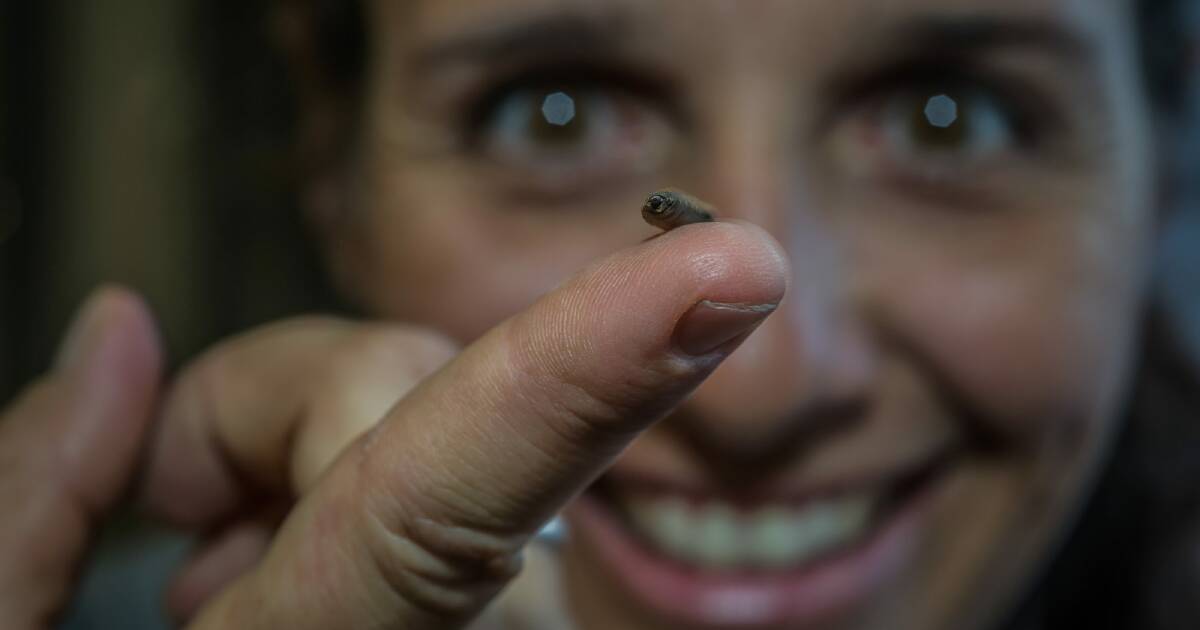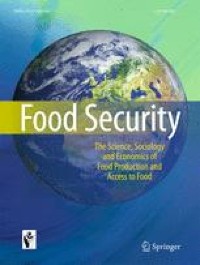Crickets and mealworms — farmed for decades in the American Southeast, first as bait for fishers — had long been the twin pillars of the lizard-food industry. The problem, though, is that they cannot meet reptiles’ calcium needs. That means pet owners must dust the live feed with the mineral to guard against calcium deficiency, which can cause tremors, seizures and even death.
The soldier fly solves that problem. Tomberlin’s adviser, Sheppard, discovered they are extremely high in calcium — 50 times more per gram than mealworms and crickets. Within a few years, by 2006,
he secured a trademark to use soldier fly larvae as feed for geckos, bearded dragons and other reptiles. Soon after, other more established
pet food companies entered the market with
their own soldier fly brands.
Symton is one of the more recent entrants into that market. The Texas company occupies several thousand feet of commercial warehouse space and has about a dozen employees. It’s already profitable and growing fast: Larvae production has doubled in the past six months, up to 2 million a week.
Most of the magic happens in a single room filled with racks of open plastic tubs. Each container holds thousands of grubs in various stages of development, happily munching their way through piles of specially formulated grain mash.
Symton BSF President Lauren Taranow in a rearing room at the company’s facility in College Station. (Loren Elliott for The Washington Post)
Because soldier fly cultivation is so new, there was much trial and error to get the company to where it is today, Taranow said. Researchers had to calculate the right combination of food and moisture (cricket production, by contrast, is so well-established that
you can purchase commercial cricket chow in 40-pound bags). They had to lock down the proper grub-to-feed ratio, as well as the precise temperature, lighting and humidity, needed to ensure larvae reached the desired size. If any variable is out of whack, the entire colony can crash.
Another challenge for soldier fly farmers is that larvae are surprisingly mischievous. A wet grub can scale any surface, from wood to glass, so growers have to maintain specific humidity levels to prevent them from getting damp, escaping their confines and generally running amok. A group of dry larvae left alone in an enclosure without food will congregate in a corner, piling up “
World War Z”-style until they’re tall enough to allow their compatriots to escape. Symton solved this problem, in part, by piling wet mash in the center of their bins with a moat of dry material along the edges to prevent escape.
After they reach the desired size, the larvae are sifted out, weighed and poured into plastic containers and then shipped all over the country. One byproduct of the process is frass — the scientific term for bug excrement. Symton produces scads of the stuff, which it piles up outside the facility and donates to local landscapers for use as compost.
An acre of land used to raise soldier fly colonies can produce more than 130,000 pounds of protein per year, according to various peer-reviewed estimates. That’s several orders of magnitude greater than the per-acre protein yield of cattle (about 40 pounds), soybeans (950 pounds) or chickens (1,800 pounds).
“Black soldier fly larvae can make thousand-folds more protein than terrestrial animals or other plants,” said Liz Koutsos, chief executive of Kentucky-based EnviroFlight, which raises soldier fly larvae used in protein meal for commercial fish and poultry operations. The yields are so high because soldier fly colonies can be stacked vertically, five to 10 per floor, in a way that isn’t possible with cattle or field crops. The fast-growing larvae also can be harvested dozens of times per year.
EnviroFlight, like Evo, feeds its larvae byproducts of the distilling industry. When the grubs reach full size, they’re harvested, dried in industrial ovens and processed into a
protein-rich meal and
oil. The technology is moving so quickly, however, that regulators are having difficulty keeping up.
Black soldier fly meal only won approval as
fish and
poultry feed in 2018. Koutsos said EnviroFlight and companies such as
Enterra in Canada and
Protix in the European Union are working to win regulatory approval for using the meal in food for other animals, including swine and even cats and dogs.
The idea is to take pressure off traditional sources of protein meal, such as fish. About
one-quarter of the harvest from marine fisheries is turned into food for farmed animals, including fish, hogs and poultry. More than 90 percent of those fisheries are either fully exploited or overfished, meaning that as the world’s population grows, there will be more demand for alternative protein sources.
“There’s no question that [soldier fly] meal is much more expensive right now than fishmeal,” Koutsos said. But fishmeal is becoming more expensive, and soldier fly technology is becoming cheaper. The goal, she said, is “to be at or below fishmeal [price] in five years.”
“Twenty years ago, I would have laughed” at the idea of feeding the world with bugs, said Fluker, the Louisiana cricket farmer. He
recently expanded into soldier fly production and discovered the grubs will eat the frass produced by his millions of crickets. He said he views insect farming as “a vital link to sustaining the world’s feed needs.”
The economics are promising enough that big agricultural companies are getting into the insect protein market. Cargill, the Minnesota-based agriculture giant, just last month
announced a partnership with the French biotech firm InnovaFeed to produce fish feed made from black soldier fly larvae.
“Insect protein feed can be a solution and a renewable source of protein to feed fish and ultimately feed the world,” said Maye Walraven, InnovaFeed’s head of business development, in a video announcing the partnership.
The U.N. agrees:
It forecast in a 2013 report that insect farming would have to play a key role — both as animal feed and to feed people — if the world is going to be fed sustainably in coming decades.
LEFT: Taranow wears custom leggings with black soldier fly larvae printed on them. RIGHT: Cammack and Evo Conversion Systems site manager Amy Dickerson, out of frame, inspect black soldier fly larvae. (Photos by Loren Elliott for The Washington Post)
Back at Symton, Taranow pops a couple of oven-dried soldier fly larvae into her mouth. “Honestly, they taste like Fritos,” she said.
They have a pleasant, neutral, nutty flavor to them. Slather them in powdered ranch or barbecue seasoning and it’s easy to imagine bags of them flying off the shelves in truck stops and convenience stores.
The dried larvae also have an advantage over other insect edibles — like, say, Mexico’s
chapulines — in that they don’t really look like bugs. They have few identifiable buggy characteristics — no legs to get stuck in your teeth, no eyes to stare at you. It would be easy enough to mistake them for some sort of exotic grain.
Close to 2 billion people worldwide already include insects in their diets, according to the 2013 U.N. report. Insect-based snacks are commonly seen in open-air markets in places such as
Thailand and
China, for instance.
The practice hasn’t caught on in Europe or the United States, in part, because of long-standing cultural attitudes toward insects. This is somewhat puzzling, considering many Westerners happily consume foods such as crab and lobster, which are really just giant sea bugs.
“I absolutely think there will be applications [for the soldier fly] in the human food market,” said EnviroFlight’s Koutsos. “The challenge is getting over the cringe factor.”
One potential path to human consumption is via insect-based protein powders, which can be mixed with other foods, thus lessening the ick factor.
Several companies are already doing this with crickets.
“There’s been a lot of effort put into cricket flour or mealworms for protein ingredients for everything from pasta to cookies to chips,” Tomberlin said.
He expects soldier fly protein to follow a similar path. “When you walk in these facilities in the next 10 years, we’ll look back at this era and say we were just getting started.”
Will American consumers ever embrace insect-based protein? Twenty years ago, as Fluker said, the idea would have been laughable. But today,
in the era of the vegetarian Whopper, the door is open.
Black soldier flies stuck to a ribbon trap at Evo Conversion Systems. (Loren Elliott for The Washington Post)
Design by Clare Ramirez. Photo editing by Annaliese Nurnberg.






























